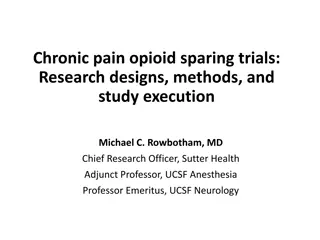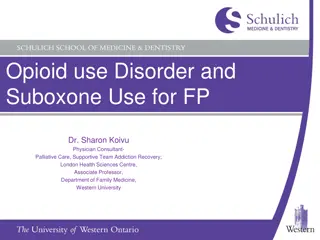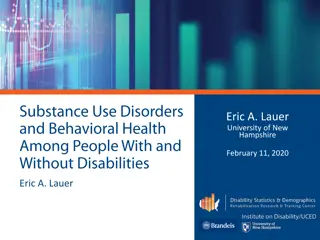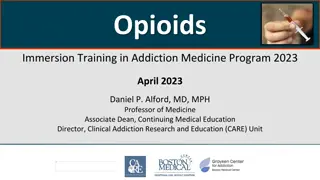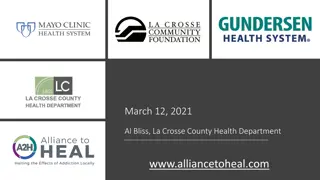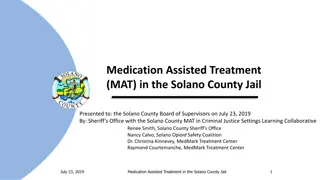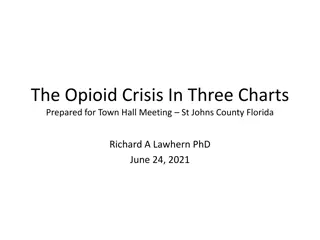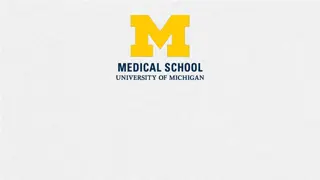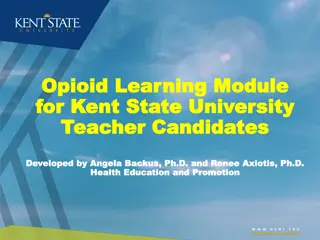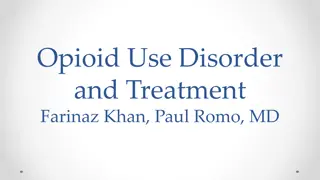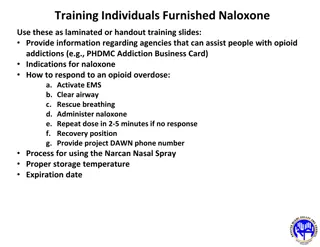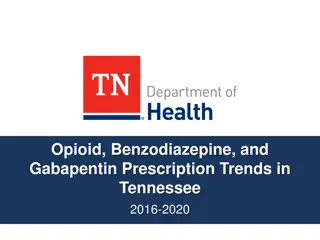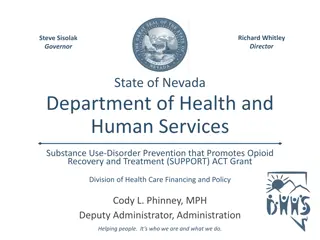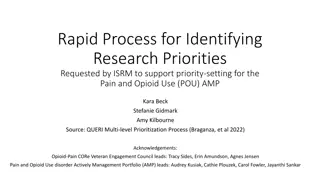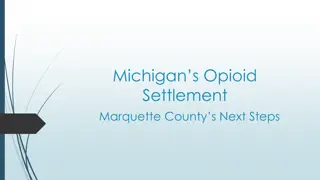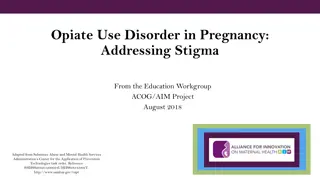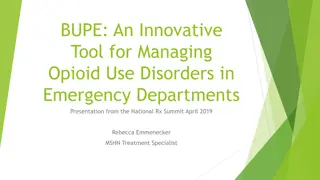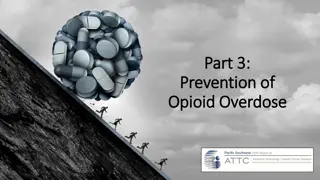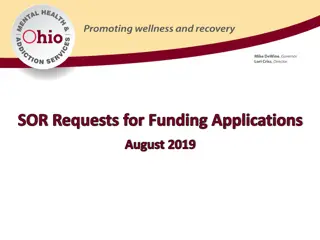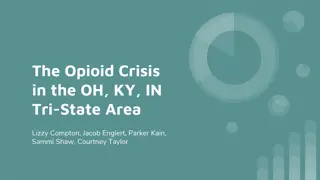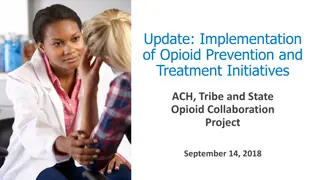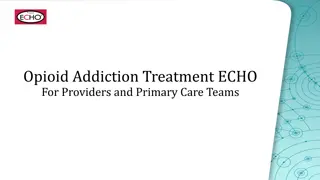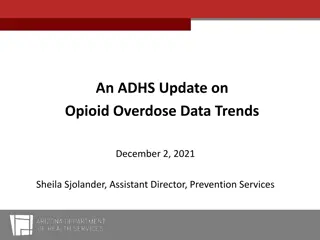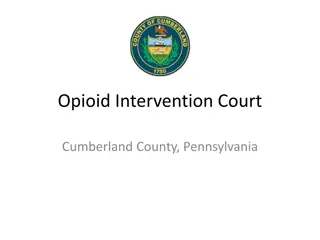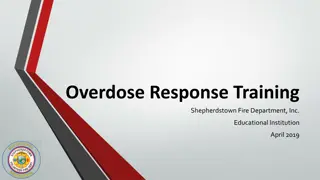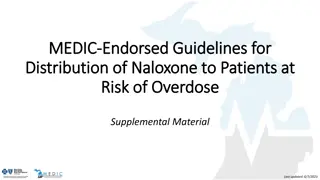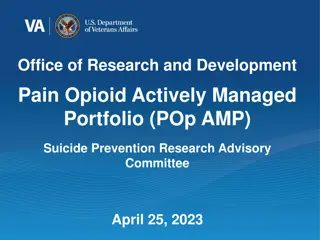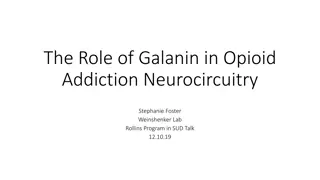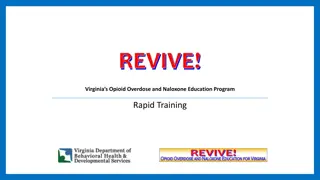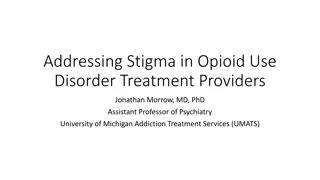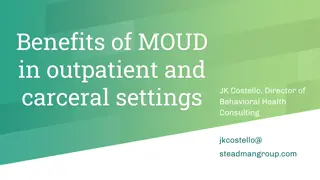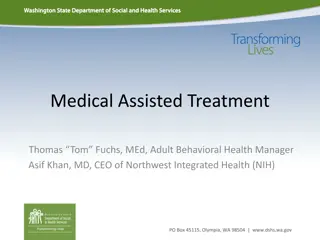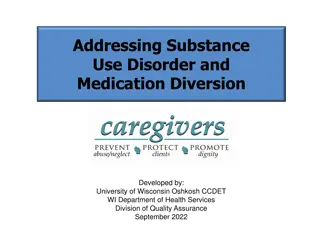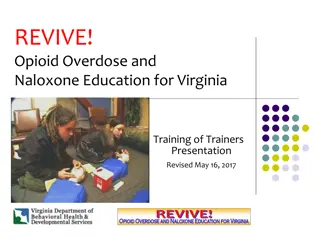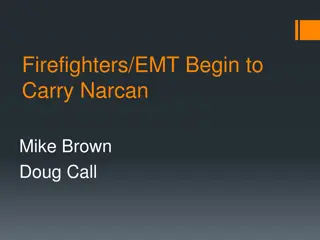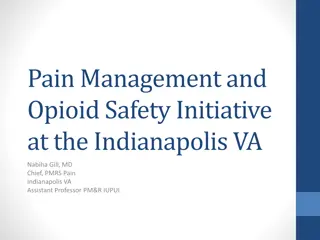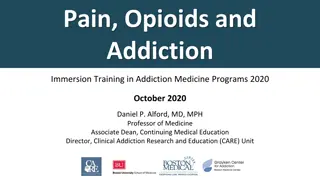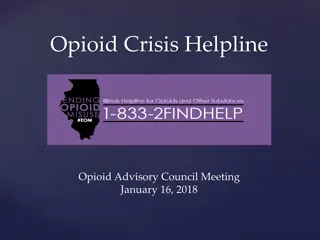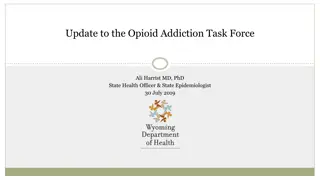Two-Year Results of AIROH Program: A Comprehensive Approach to Opioid Use Disorder Education
Maryland and Baltimore, epicenters of the Opioid Use Disorder epidemic, implemented the AIROH program to educate primary care physicians on OUD prevention, diagnosis, and treatment. The curriculum, developed with seed funding, aims to augment the physician workforce proficient in evidence-based, harm-reduction-focused care for OUD patients through interdisciplinary education.
Download Presentation

Please find below an Image/Link to download the presentation.
The content on the website is provided AS IS for your information and personal use only. It may not be sold, licensed, or shared on other websites without obtaining consent from the author. Download presentation by click this link. If you encounter any issues during the download, it is possible that the publisher has removed the file from their server.
E N D
Presentation Transcript
Accelerating Interdisciplinary Education in Opioid Use Accelerating Interdisciplinary Education in Opioid Use Disorder and Harm Reduction: Disorder and Harm Reduction: Two Year Results of the AIROH Program Two Year Results of the AIROH Program Aaron Greenblatt, MD and Sarah Kattakuzhy, MD, MPH Britt Gayle, MD, MPH; Meghan Derenoncourt, BA; Danielle Baek, MD; Aditi Ringwala, MD; Elana Rosenthal, MD
Disclosures Disclosures No relevant disclosures
Acknowledgements Acknowledgements The people with substance use disorders who have been our teachers The students of AIROH who have continued this educational journey The University of Maryland School of Medicine is located on the ancestral territory of the Susquehannock people
Background Background
Background Background Maryland and Baltimore are epicenters of the Opioid Use Disorder (OUD) epidemic Primary care physicians are critical to the prevention, diagnosis, and treatment of OUD Before 2020, there was no OUD curriculum within the FM or IM residency programs
Methods Methods
Program Development Program Development Accelerating Interdisciplinary Resident Education in Opioid Use Disorder and Harm Reduction (AIROH) $50K in seed funding from an internal UMB grant focused on substance use
Objective Objective To create a curriculum in opioid use disorder education targeting front-line providers To augment the physician workforce equipped to provide evidence-based, harm-reduction-focused care to patients with OUD
Intervention (Year 1) Intervention (Year 1) OUD and Pain Management Inpatient Management and Transitions of Care in OUD Primary Care in Patients with OUD Harm Reduction Case Learning OUD Pathophysiology Buprenorphine Waiver Training
Modified Intervention (Year 2) Modified Intervention (Year 2) OUD and Pain Management Inpatient Management and Transitions of Care in OUD Primary Care in Patients with OUD Case Learning Buprenorphine Waiver Training
Assessment Assessment All residents completed a Knowledge of and Attitude towards OUD (KAO) survey before and after the training The frequencies and percentages of demographic and baseline variables were reported The change in pre and post evaluations (dichotomized) were examined using McNemar test
Results Results
Training Programs (n=96) Training Programs (n=96) 13% 15% 27% 9% 2% 21% 85% 28% Family Medicine Internal Medicine Northeast Midwest South West Mid-Atlantic Outside of the USA
Racial and Gender Identity (n=96) Racial and Gender Identity (n=96) 1% 3% 3% 10% 2% 47% 33% 52% 49% Black or African american Asian Middle Eastern White Biracial/Multiracial Female Transgender Male Queer/Non-binary
Prior OUD Education (n=96) Prior OUD Education (n=96) 2% 4% 16% What level of education on the diagnosis and treatment of OUD did you receive in medical school? Adequate Mostly Adequate Slightly Inadequate Inadequite None 43% 35%
Comfort with OUD Care (n=96) Comfort with OUD Care (n=96) 100 90 80 70 58 60 52 49 50 39 37 40 30 20 10 0 Discussing or counseling on harm reduction Discussing or counseling on MOUD Providing primary care to OUD patients Using naloxone for opioid overdose Knowing someone with OUD was one of my patients
Attitudes towards OUD Care (n=96) Attitudes towards OUD Care (n=96) 100 91 90 90 81 80 80 72 70 60 50 40 30 20 10 0 Patients with OUD have a right to receive MOUD Buprenorphine is an appropriate part of primary care Physicians should prescribe harm reduction services Supervised consumption facilities should be available to OUD patients I need to learn more about the diagnosis and management of OUD
Changes Associated with AIROH (n=65) Changes Associated with AIROH (n=65) Pre-Test Post-Test P value I feel comfortable diagnosing OUD in patients 37% 97% <.001 I feel comfortable counseling patients on MOUD 33% 73% <.001 I feel comfortable counseling patients on harm reduction 42% 80% <.001 I feel comfortable providing primary care to patients with OUD 39% 74% <.001 I need to learn more about the diagnosis and management of OUD 91% 68% .003 I know enough now to prescribe bup in the primary care setting 8% 42% <.001 I would feel comfortable knowing that someone with OUD was going to be one of my patients 57% 91% <.001
Conclusions Conclusions
Summary of Findings Summary of Findings PGY-1 believe that patients with OUD deserve access to evidence-based care but lack the confidence to provide this care A longitudinal didactic curriculum was successful at increasing self-assessed confidence in OUD care, knowledge of MOUD and knowledge of harm reduction
Takeaways Takeaways Comprehensive investments in OUD education is necessary and feasible to adequately prepare front-line physicians facing the opioid epidemic We hope to leverage these findings to further expansion of opioid use disorder training in our institution The AIROH program has grown to include NP, PA, and MD students
Thank You Thank You


